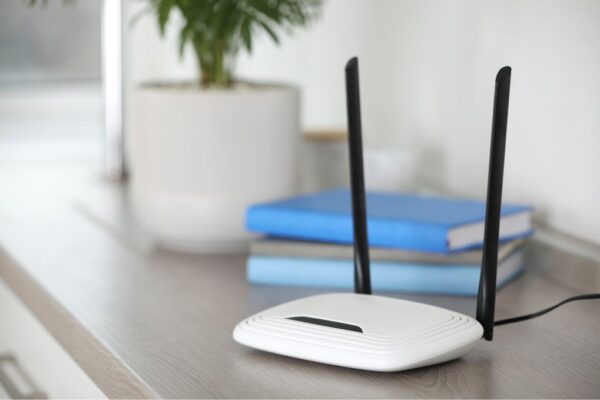It’s one of the most oft-repeated terms of the past eighteen months – remote working. The world as a whole has been undeniably changed forever by the cataclysmic and unprecedented events of the Covid-19 pandemic. As a result, collective workplaces from all around the globe have become entirely new spaces, completely unrecognizable from their predecessors. The concept of remote working has of course been around for a while, the idea of working from home extensively instead of in the public office. However, it is only within the past year and a half that it has gained widespread prominence as an effective method of combat against such cataclysmic events as these.
But firstly, establishing the difference between remote working and remote-first work is important – a remote working office implies that employees are working outside of the physical workplace for only some of the time, while remote-first work tactics assume that employees are working outside of the office all of the time.
Why Is Remote-First Work Important Now
Remote-first work approaches are perhaps the key to the future prosperity of workplaces worldwide. A business tactic that ensures most, if not all, employees work primarily from their homes obviously implies that very little activity is taking place at the office. The less activity taking place at public settings like offices the better. As of November 2021, Covid cases have been rising significantly all over Ireland throughout the past few weeks. The past few months have been defined by a leniency of sorts in regard to Covid-safe behaviour. Pubs, nightclubs and other public settings have opened up, restrictions are no longer enforced with the same urgency.

In light of these growing concerns, increased safety measures are not only necessary, but perhaps imperative. Starting with the workplace is possibly one of the best places to start. Also, given the severity of these increasing concerns, this is maybe why a remote-first work approach would be more appropriate than a remote working one. As a remote-first approach would be more effective in guaranteeing employees are outside the physical workplace full-time.
Also importantly, if you or anyone else you know is struggling during the Covid-19 pandemic whether due to extreme uncertainty or lack of direction or whatever reason, the Employment Hero COVID-19 Resource Hub is available to all people to help get people through this difficult time.
Benefits of Remote-First Working
Cost-effective
Perhaps the most obvious advantage outside of the numerous health benefits, a remote-first work environment allows for businesses to eschew extreme funding for an office space, saving large amounts of much needed money. In several cities worldwide of course, property and space are of the highest demand, and their all-too common shortage is truly a worrying sign. In such cities, office spaces go for staggeringly high numbers, with owners taking advantage of the imbalanced system, but now things have changed. A remote-first system forgoes the occupation of an office altogether, saving funds for the business, and providing much needed space for businesses who otherwise would desperately need it.
Increased employee range
In a remote-first work system, managers and superiors alike will have a greater range of employees to choose from, with a wider range of skills to potentially add to their roster. Why is this the case? Because, the possibility of having to relocate to a new location in order to be near work will be erased. Employees from various parts of the country and even from around the globe will not be hampered by this obstacle. They will be free to try their luck with a variety of companies that provide them with the adequate job satisfaction as everything will be done from the employee’s home no matter where that may be. Thus, employees of a wider skillset are potentially available to recruiting managers.
Greater employee satisfaction
In addition to eliminating the potential need for employees to relocate, remote-first work also allows for employees to eschew the need to spend money on commuting to work, leading to higher disposable income for the average employee and higher satisfaction rates, and also environmental benefits (less traffic congestion). Any disposable income, for the average worker will be much needed amid this economically and socially unsure period. Additionally, the opportunity for employees to focus more on their home lives while working remote-first will alleviate any possible stresses in regard to one’s personal obligations. For example, a father or mother in this system will be able to tend to their children’s urgent needs rather than leave them at a day-care of sorts, or have to interrupt their office hours in order to drive them to and from school. Employees will not be distracted within this system by their personal lives as they will have the opportunity to deal with it while at work, enabling the potential for increasingly high satisfaction in remote-first businesses.

Long-term planning and flexibility
The privilege of not having to worry about finding physical spaces to incorporate office activities saves a lot of money for employers and employees, but it also provides companies with the opportunity for effective and extensive re-evaluations of long-term plans. Without the constant need to maintain certain office spaces, business plans are unhindered by location (they have the most secure possible location and that is in workers’ homes). Businesses are then unhindered by potential mass Covid-19 outbreaks that could potentially occur in highly-populated offices. Many of the unexpected “rainy-day” disasters that businesses previously had to prepare for are no longer possible. While flexible hours are more of a possibility if tasks are being taken from home, on the flip side, more punctual hours are also capable of being effectively kept if they be in the manager’s best interests. These are all examples of the greater working flexibility a remote-first system provides workers and managers alike.
More inclusive work environment
The potential full-time switch to a remote-first system presents the opportunity for businesses to further diversify their work staff, increasing inclusiveness within the work environment. Working parents, people with disabilities or those who used to have to commute daily for extended periods, will have the same access to the same opportunities that every one of their colleagues have.

With the removal of physical workplace barriers, there exists the undeniable potential for a decline in prejudicial bias within the workforce. This bias is perhaps the oldest and greatest problem that has plagued physical workplaces for generations. Workers will all be judged almost solely on their output instead of their physical appearance, background or even character. The benefits of a more inclusive work environment are numerous, however the most important one is the creation of a happier and morally correct workplace that can last well into the future. This is all the more possible with the incorporation of a remote-first work approach.
Transitioning into Remote-First Work Environment
Communication
The transition into remote-first work has the potential to hinder communication lines between employees and employers, as, at the end the of the day, there is only so much that can be accomplished in an online Zoom meeting. That is why it is the role employees and employers to ensure they utilize communication mediums like Zoom and Teams as frequently and as effectively as possible. Efficiency may come in frequency, numerous meetings planned throughout the day could lead to the communication line being unbroken. If anything, this could lead to an improvement in relations between employer and employee, as there is much greater emphasis being placed on communication in a remote-first setting, whereas before it may have been taken somewhat for granted.
Ronspot Desk Booking Solution
Ensuring this remote-first transition is a success will be a challenge, however one of the methods by which this can be achieved is through our company Ronspot. At this company, we have created the user-friendly Ronspot app. While usually utilized in the office, this app can be used at home as well. It effectively allows for managers to see what hours their employees have put in, giving them the power to ensure an employee is not taking advantage of their home setting and letting their workload fall by the wayside as a result. This rids one of the main fears many managers have in regard to switching to a remote-first work setting. With this app, we at Ronspot believe this potential transition will be all the more possible, but also all the more successful.
Conclusion
There are many who believe a remote-first work environment is the best way forward for the workplace, but even still if such a system is going to be implemented into workplaces nationwide, a gradual implementation would likely be the best approach. Many are unsuited to this system and many still have their reservations with it. It is best that during this time action is taken to ensure that no divide breaks out between employees and employers. That is why communication methods are incredibly important. Rather than go out and out for a remote-first work environment, perhaps the best option would be to talk to a wide range of employees and find some kind of middle ground that suits, if not all then, most.

A gradual system of allowing employees to work remotely, along with the use of the appropriate kinds of technology and companies providing the necessary training material has the greatest potential in ensuring a safer and more effective workplace for the future. Not just simply a good remote-first work environment, but an environment that can potentially benefit all and serve as a reminder that even amidst the aftermath of such a cataclysmic event like Covid-19, the global workforce can still learn, adapt and change for the greater good.


